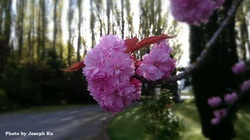Tree Maintenance and Care in Winter
Winter brings its own set of challenges for tree maintenance and tree care. Here’s a guide for your winter tree maintenance.
Why You Should Hire an Arborist
When you look around at the beauty of your property, trees are often a significant feature. However, keeping trees healthy and looking their best involves more than just occasional watering. This is where the expertise of a professional and skilled arborist becomes invaluable.
How Age Shapes a Tree’s Health and Strength
Trees, much like us humans, go through distinct stages in their lives, each with its own challenges and requirements to keep them healthy and strong.
Essential Tree Care Tips for June
In winter, trees enter a period of dormancy, it's crucial to continue providing the necessary care to ensure their health and resilience.
Celebrating Arbor Day in New Zealand
Arbor Day is a cherished celebration in New Zealand, dedicated to the planting and nurturing of trees. This special day reflects the nation's commitment to environmental stewardship, community involvement, and the preservation of natural heritage.
Greening Your Space
In the verdant of countryside landscapes of New Zealand, trees play a pivotal role in enhancing the beauty and biodiversity of any garden. It's essential to consider certain factors and to understand how to care for your trees.
Tree Care Tips
We’ve compiled these articles so that you too, can benefit from the experience and knowledge that our arborists and skilled tree techs have. We are committed to our customers and desire that you enjoy and value your tree’s as much as we do.
Giving back to the community in various ways is yet another one of our key focuses.
 Spring is the perfect time to prune your ornamental trees, the sap has stopped rising, most trees are finishing flowering & leaves have developed. Trees are actively growing so any cuts are going to heal well. Trees are less prone to disease or infections due to the above reasons when pruned at this time of year. So for healthier trees & more sun during those evening BBQ’s & entertaining prune at the right time. If you need help or would prefer an expert arborist to do this for you please give us a CALL NOW on 344-6223 for your FREE Spring Tree Appraisal.
Spring is the perfect time to prune your ornamental trees, the sap has stopped rising, most trees are finishing flowering & leaves have developed. Trees are actively growing so any cuts are going to heal well. Trees are less prone to disease or infections due to the above reasons when pruned at this time of year. So for healthier trees & more sun during those evening BBQ’s & entertaining prune at the right time. If you need help or would prefer an expert arborist to do this for you please give us a CALL NOW on 344-6223 for your FREE Spring Tree Appraisal.